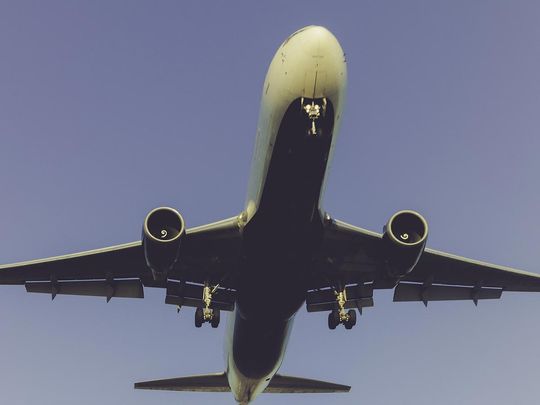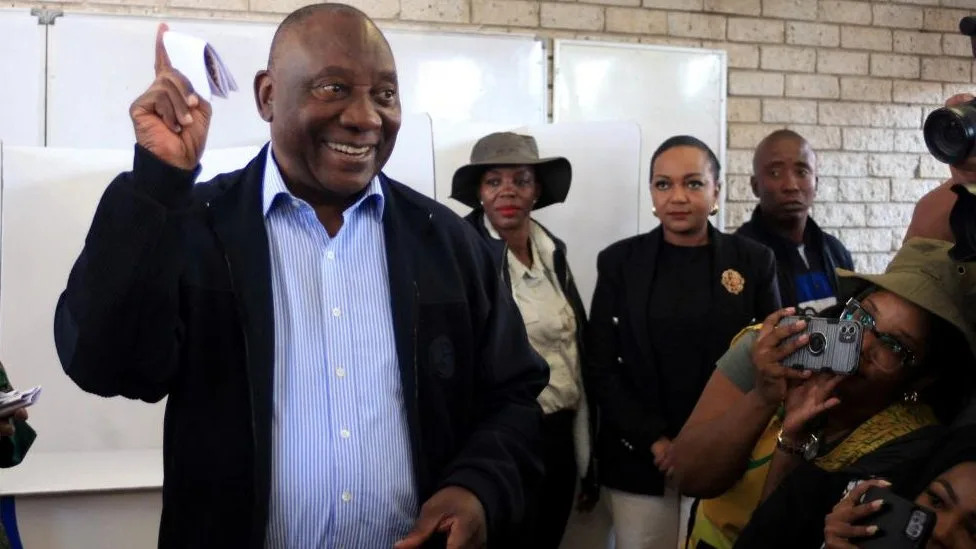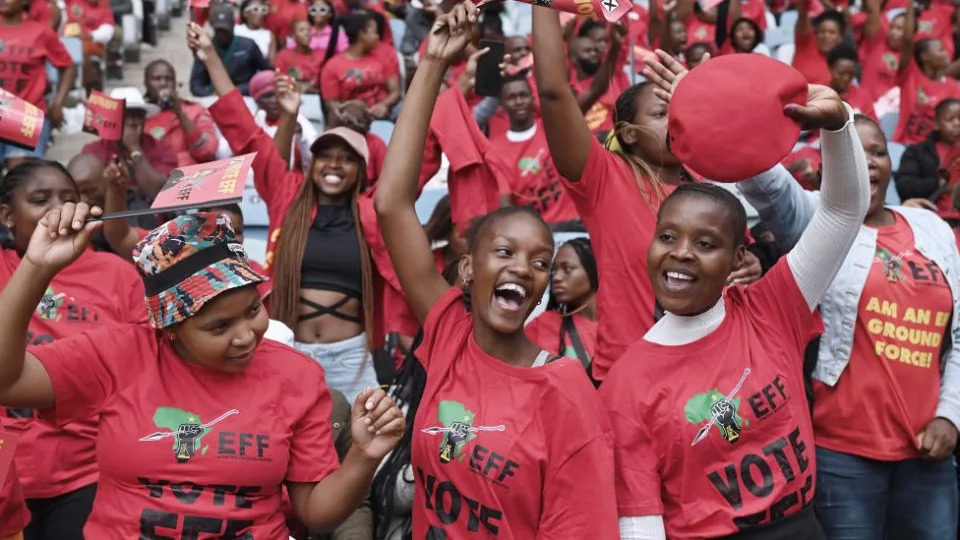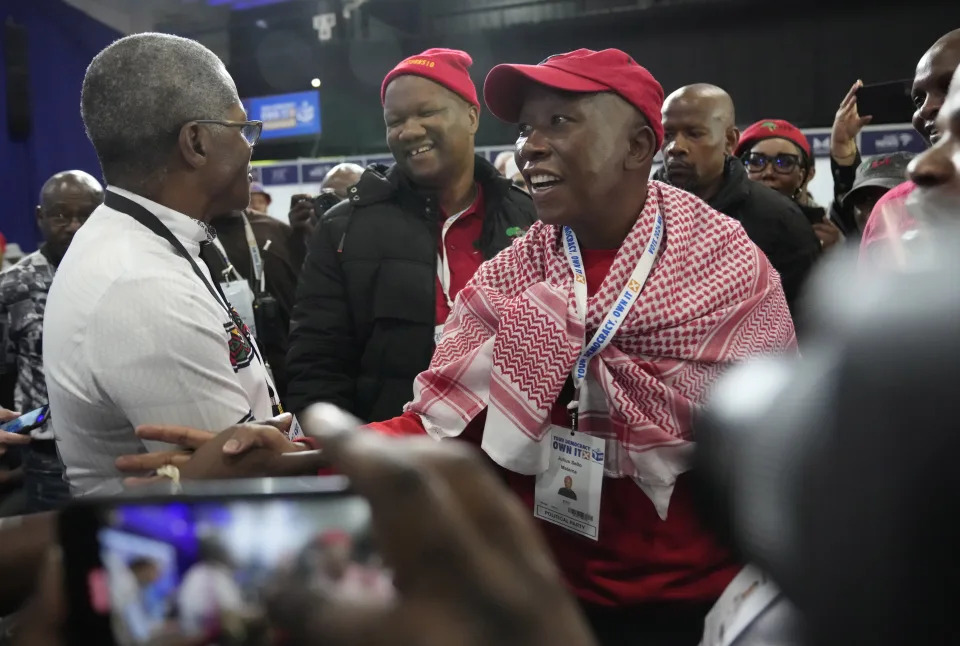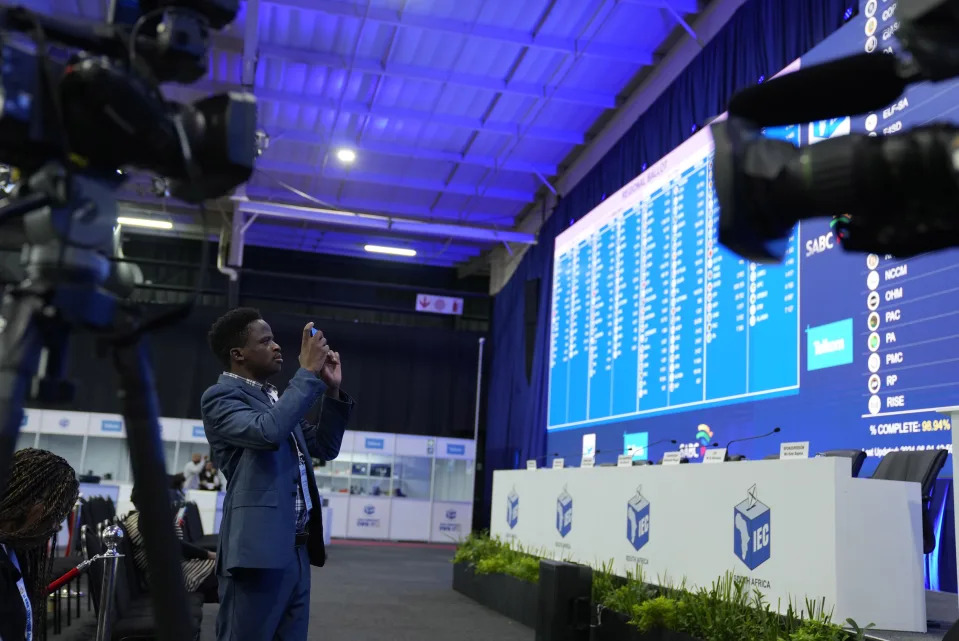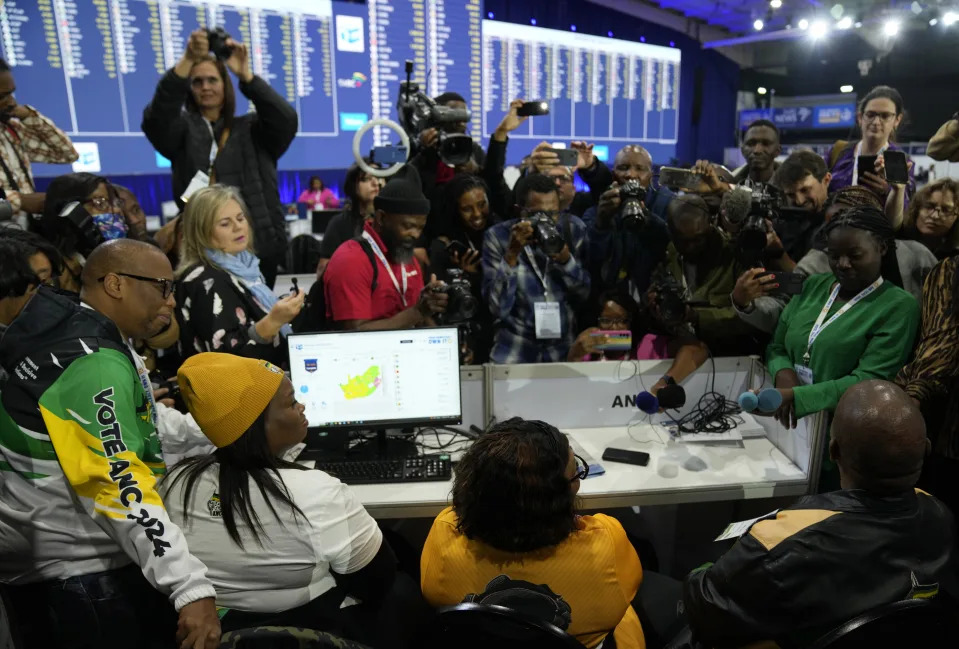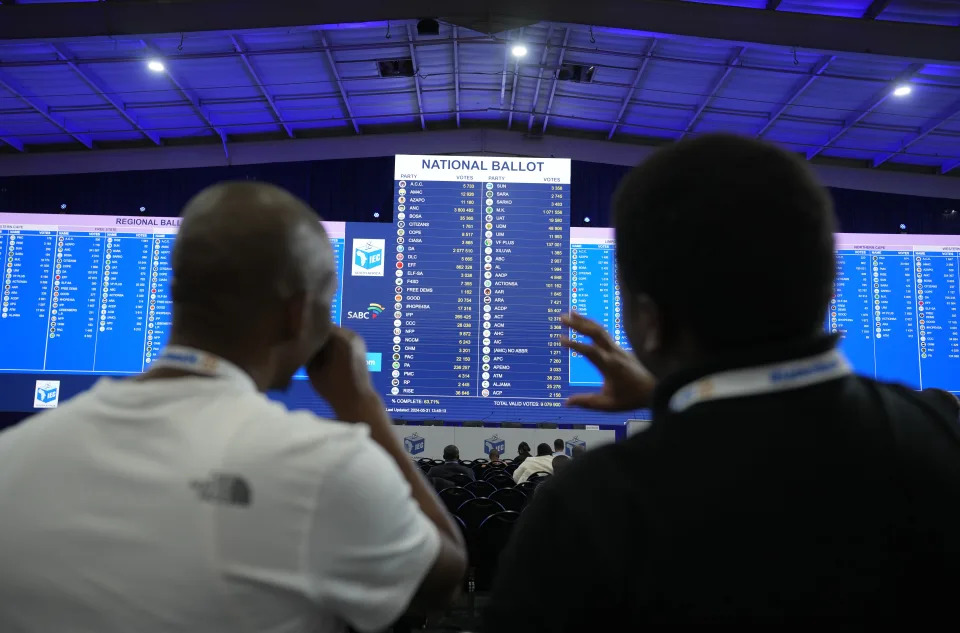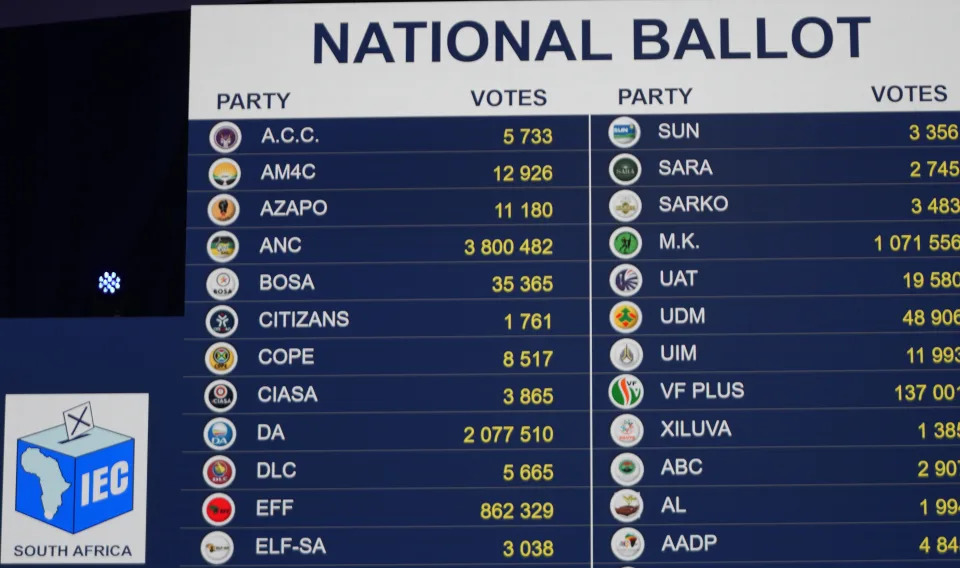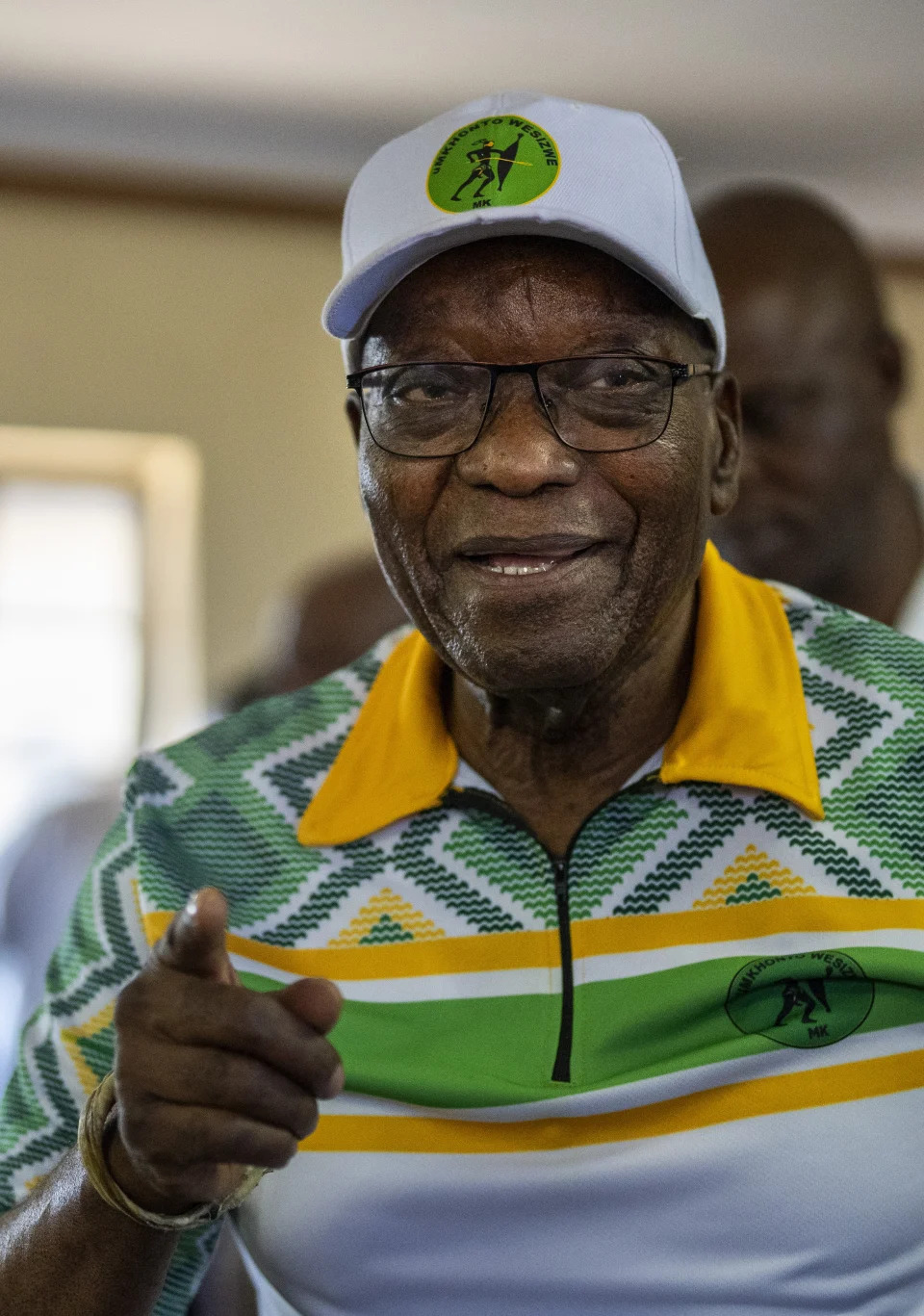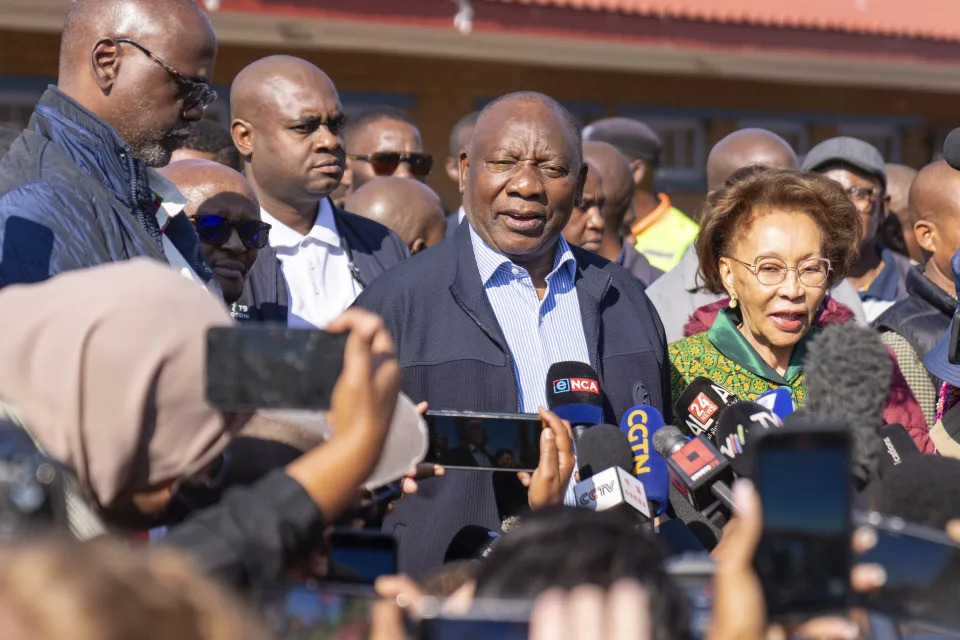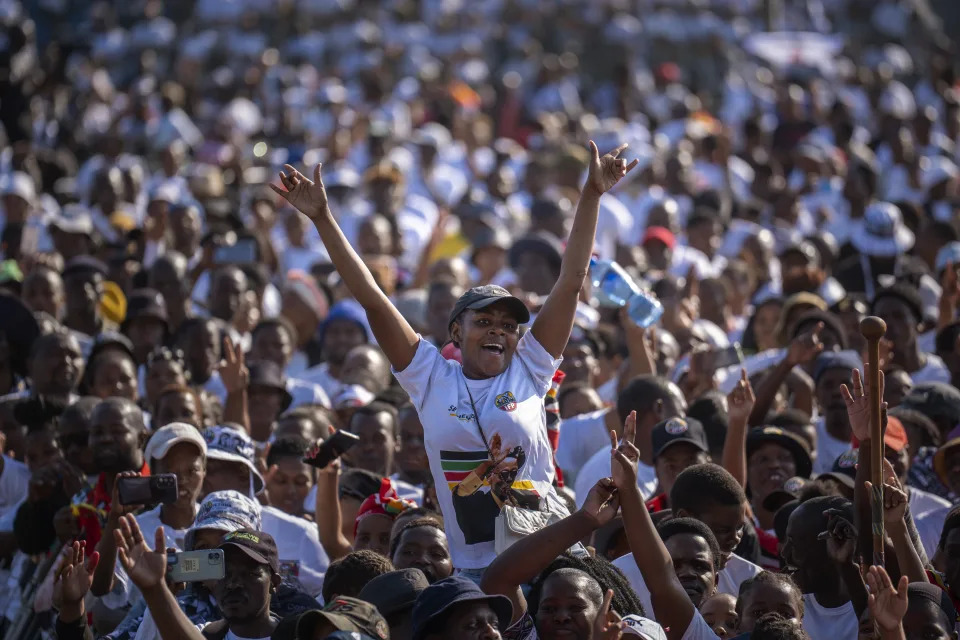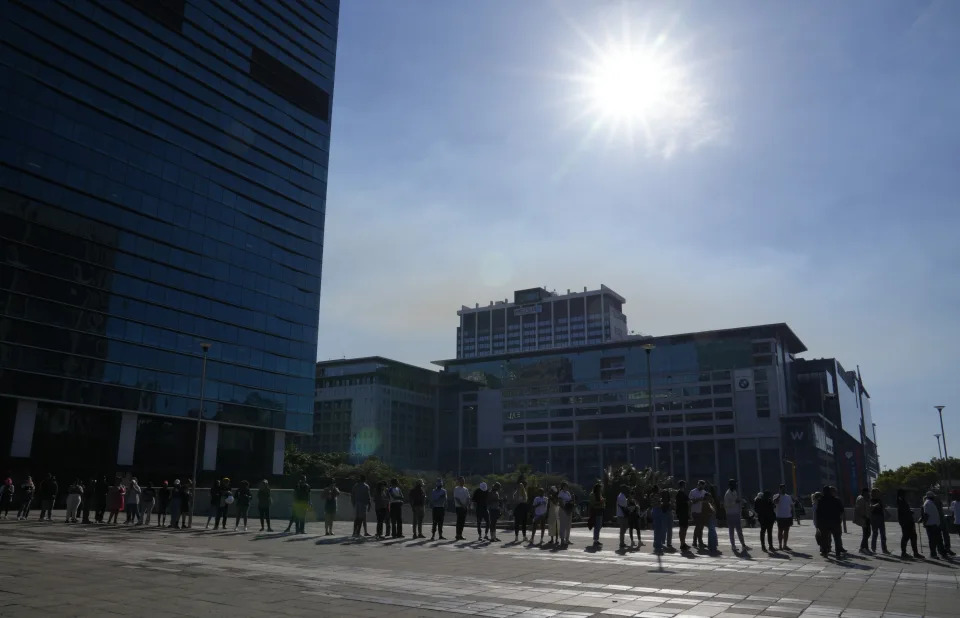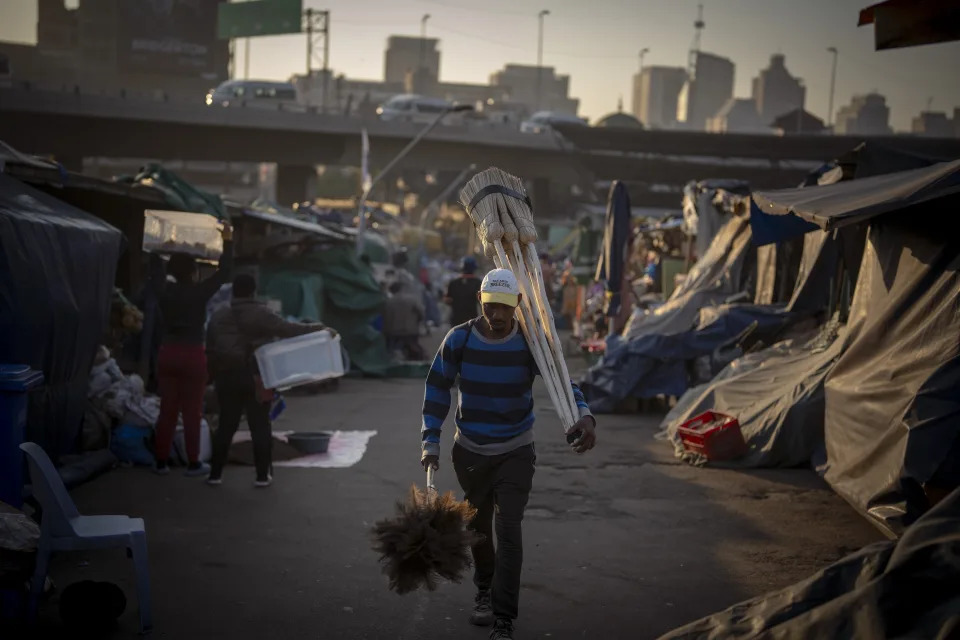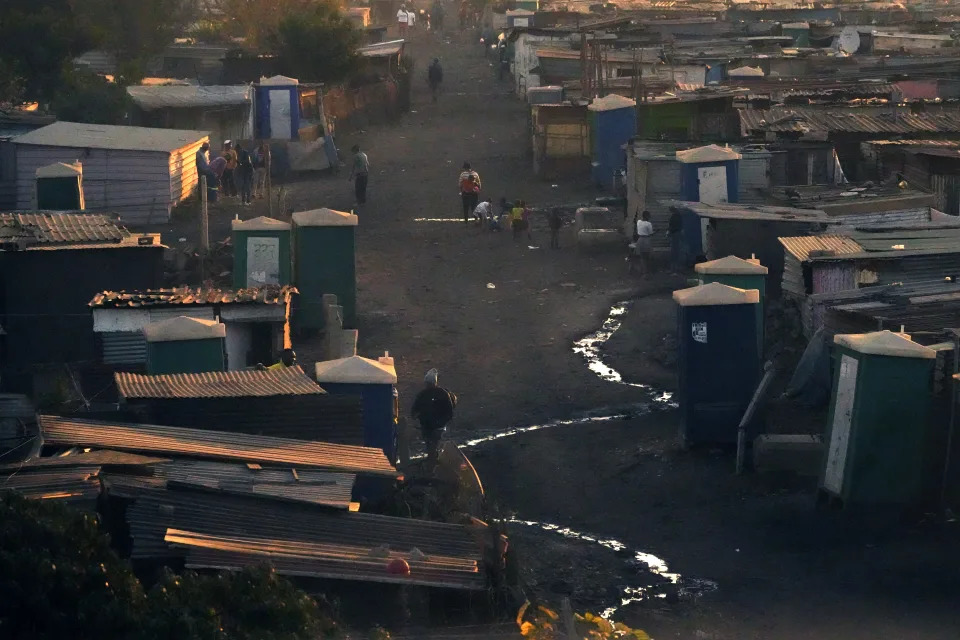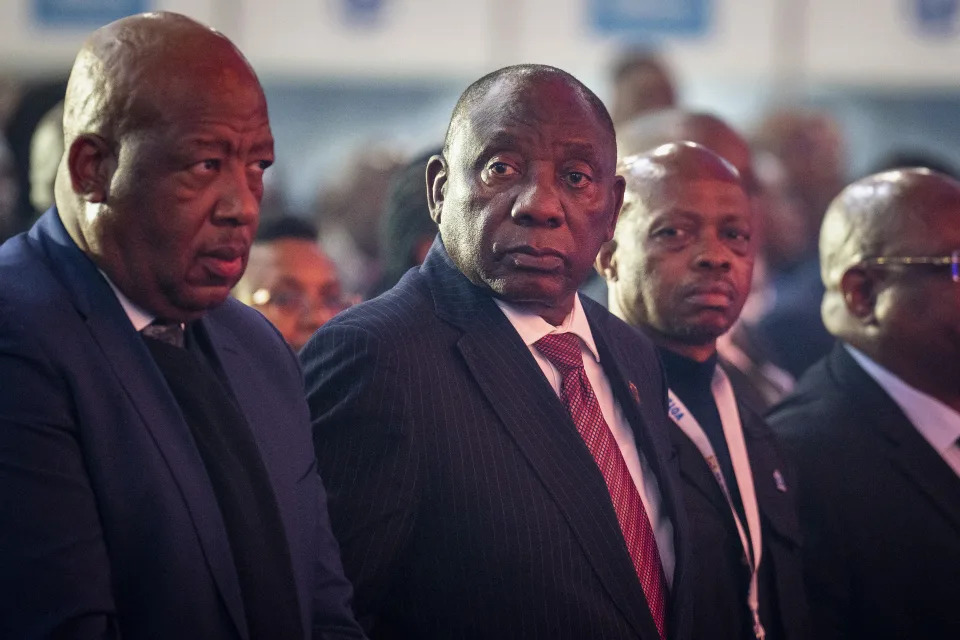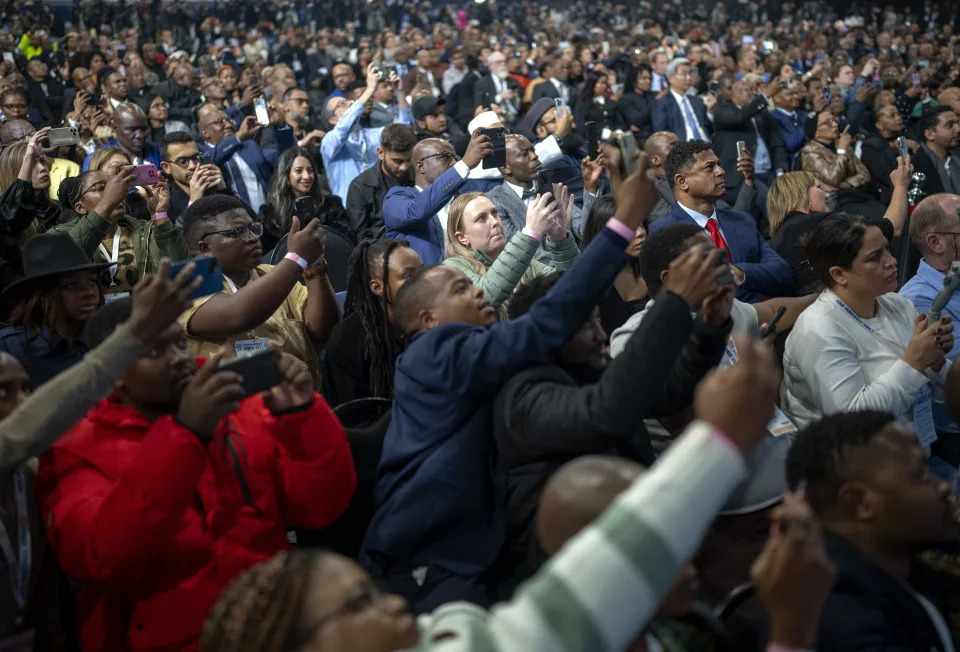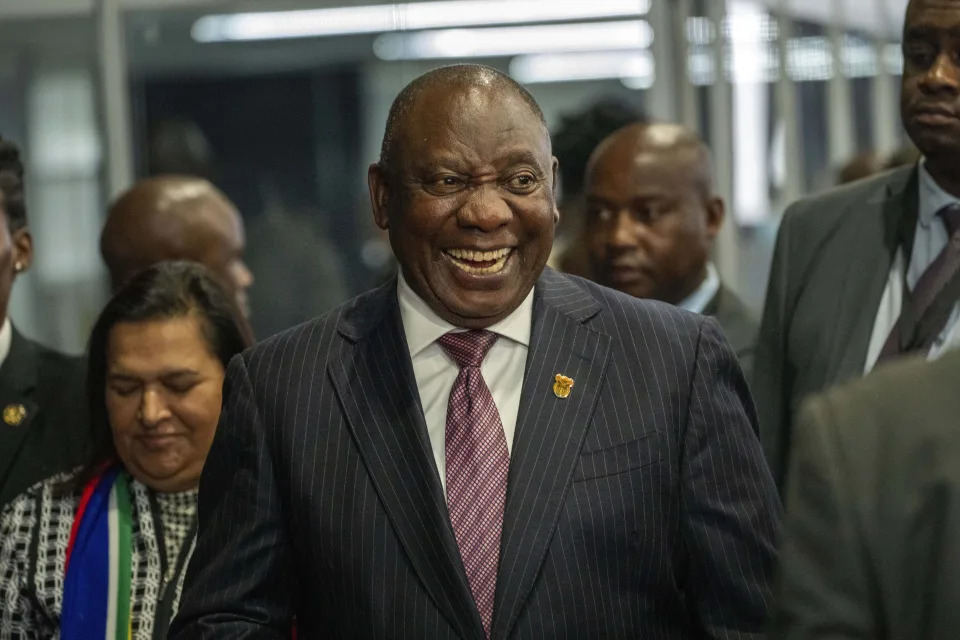SPACE
Europe’s Ariane 6 rocket finally ready for liftoff
By AFP
July 1, 2024
A dress rehearsal for the Ariane 6 rocket, which will launch for the first time on July 9 - Copyright ArianeGroup/AFP/File P. PIRON
Mathieu Rabechault
Europe’s new Ariane 6 rocket is set for its first-ever launch next week, carrying with it the continent’s hopes of regaining independent access to space and fending off soaring competition from Elon Musk’s SpaceX.
After four years of delays, the European Space Agency’s (ESA) most powerful rocket yet is finally due to blast off from Europe’s spaceport in Kourou, French Guiana, at 3:00 pm (1800 GMT) on July 9.
Since the last flight of the rocket’s workhorse predecessor, Ariane 5, a year ago, Europe has been unable to launch satellites or other missions into space without relying on rivals such as the US firm SpaceX.
Kourou was the site of launches by Russia’s Soyuz rockets for more than a decade, before Moscow withdrew them after invading Ukraine in 2022.
Later that year, Europe’s Vega-C light launcher was grounded after a launch failure. Delays to Ariane 6’s first flight — originally scheduled for 2020 — compounded the crisis.
“Everything that could go wrong went wrong,” ESA chief Josef Aschbacher said.
That is why “Ariane 6 is crucial for Europe,” he added. “It’s absolutely mandatory for Europe to have an independent access to space.”
After the struggles of the 4.5-billion-euro ($4.8 billion) programme, Europe’s space industry has been nervously observing the run-up to the launch.
A “wet dress rehearsal” late last month ran through all the launch procedures, right up to the moment before the engines ignite on the launchpad.
It went “very smoothly… like a Swiss watch,” ESA space transportation acting director Toni Tolker-Nielsen said, adding that there was nothing to call the launch date into question.
– ‘Important moment’ –
Ariane 6 will put satellites into geostationary orbit, which appears stationary by matching Earth’s speed at 36,000 kilometres (22,000 miles) above Earth. It can also launch constellations a few hundred kilometres up.
The rocket’s upper stage, powered by the Vinci engine, ignites after take-off to place satellites in orbit before falling into the Pacific Ocean — a special feature to prevent space debris.
Ariane 6’s first launch will use two boosters, with a more powerful four-booster version scheduled for liftoff in the middle of next year.
However, the boosters and other parts of the rocket are not reusable — unlike SpaceX’s Falcon 9 rocket.
Billionaire Musk has repeatedly criticised Ariane 6 for not being reusable.
The European response has been that it would not make economic sense for the rocket to be reusable because it was designed for far fewer launches than the Falcon 9.
The rocket will initially carry out nine launches a year — a far cry from the Falcon 9, which managed 14 in May alone.
The rocket’s inaugural flight will carry 18 different smaller items, including university micro-satellites and scientific experiments.
Its first commercial flight is scheduled for later in 2024, with 14 more planned over the next two years.
– Shock late cancellation –
One positive for Ariane 6 is that space business is booming.
The amount spent on launchers, satellites and other parts of the space economy is projected to surge to $822 billion by 2032, up from $508 billion last year, according to consulting firm Novaspace.
But this has not yet been enough to make Ariane 6 profitable.
The financing for the first 15 launches has been secured.
But the ESA’s 22 member states have agreed to subsidise the rocket for up to 340 million euros a year from its 16th to 42nd flights — in return for an 11 percent discount.
Ariane 6 already has an order book of 30 missions, including 18 to deploy some of Amazon’s Kuiper constellation of internet satellites.
“That is absolutely unprecedented for a rocket that has not flown,” said Stephane Israel, CEO of launch service provider Arianespace.
However, just days before the inaugural flight, Europe’s weather satellite operator EUMETSAT cancelled plans to use the European Ariane 6 in favour of SpaceX’s Falcon 9, citing “exceptional circumstances”.
Philippe Baptiste, head of France’s CNES space agency, called it “a very disappointing day for European space efforts”.
Faced with such stiff competition, the challenge for Ariane 6 will be to survive in a “market that needs rockets”, ArianeGroup CEO Martin Sion said.
After all, Ariane 6 is “Europe’s sovereignty launcher”, he added.
Moon ‘swirls’ could be magnetized by unseen magmas
Mysterious, light-colored swirls on Moon’s surface could be rocks magnetized by magma activity underground, WashU laboratory experiments confirm
WASHINGTON UNIVERSITY IN ST. LOUIS
Lunar swirls are light-colored, sinuous features on the Moon’s surface, bright enough to be visible from a backyard telescope. Some people think they look like the brushstrokes in an abstract painting. But these are not mere artistic flourishes: NASA images show that the tendrils from some lunar swirls extend for hundreds of miles.
Lunar swirls have defied easy explanation, but recent modeling and spacecraft data shed light on the twisty mystery. The data shows that rocks in the swirls are magnetized, and these rocks deflect or redirect solar wind particles that constantly bombard the Moon. Nearby rocks take the hit instead. Over time, neighboring rocks become darkened by chemical reactions caused by the collisions, while the swirls remain light colored.
But how did the rocks in lunar swirls get magnetized? The Moon does not have a magnetic field today. No astronaut or rover has yet visited a lunar swirl to investigate.
“Impacts could cause these types of magnetic anomalies,” said Michael J. Krawczynski, an associate professor of earth, environmental and planetary sciences in Arts & Sciences at Washington University in St. Louis. He notes that meteorites regularly deliver iron-rich material to areas on the Moon’s surface. “But there are some swirls where we’re just not sure how an impact could create that shape and that size of thing.”
Krawczynski believes it’s more likely that something else has locally magnetized the swirls.
“Another theory is that you have lavas underground, cooling slowly in a magnetic field and creating the magnetic anomaly,” said Krawczynski, who designed experiments to test this explanation. His results are published in the Journal of Geophysical Research: Planets.
Krawczynski and study first author Yuanyuan Liang, who recently earned her PhD in earth, environmental and planetary sciences in Arts & Sciences, measured the effects of different combinations of atmospheric chemistry and magmatic cooling rates on a mineral called ilmenite to see if they could produce a magnetizing effect.
“Earth rocks are very easily magnetized because they often have tiny bits of magnetite in them, which is a magnetic mineral,” Krawczynski said. “A lot of the terrestrial studies that have focused on things with magnetite are not applicable to the Moon, where you don’t have this hyper-magnetic mineral.”
But ilmenite, which is abundant on the Moon, can also react and form particles of iron metal, which can be magnetized under the right conditions, Krawczynski and his team found.
“The smaller grains that we were working with seemed to create stronger magnetic fields because the surface area to volume ratio is larger for the smaller grains compared to the larger grains,” Liang said. “With more exposed surface area, it is easier for the smaller grains to undergo the reduction reaction.”
“Our analog experiments showed that at lunar conditions, we could create the magnetizable material that we needed. So, it’s plausible that these swirls are caused by subsurface magma,” said Krawczynski, who is a faculty fellow in the university’s McDonnell Center for the Space Sciences.
Determining the origin of lunar swirls is considered key in understanding what processes have shaped the lunar surface, the history of a magnetic field on the Moon and even how the surfaces of planets and moons generally affect the space environment surrounding them.
This study will help interpret data acquired by future missions to the Moon, especially those that explore magnetic anomalies on the lunar surface. NASA intends to send a rover to the lunar swirl area known as Reiner Gamma in 2025 as part of the Lunar Vertex mission.
“If you’re going to make magnetic anomalies by the methods that we describe, then the underground magma needs to have high titanium,” Krawczynski said. “We have seen hints of this reaction creating iron metal in lunar meteorites and in lunar samples from Apollo. But all of those samples are surface lava flows, and our study shows cooling underground should significantly enhance these metal-forming reactions.”
For now, his experimental approach is the best way to test predictions about how unseen lava may be driving the magnetic effects of the mysterious lunar swirls.
“If we could just drill down, we could see if this reaction was happening,” Krawczynski said. “That would be great, but it’s not possible yet. Right now, we’re stuck with the surface.”
JOURNAL
Journal of Geophysical Research Planets
Russia to build new orbital station by 2033
Yury Borisov, head of Russia's state space corporation Roscosmos, has approved the schedule for the creation of a Russian orbital station by 2033, the corporation said in a press release Tuesday.
The schedule includes the design and construction of the space modules, flight tests of a new-generation manned spaceship, the creation of launch vehicles and space infrastructure on Earth, and a timetable for the work of scientific institutes supporting the project, the statement said.
The document was also signed by the general directors of 19 enterprises which are involved in the construction of the new orbital station.
The scientific and energy module will be launched first in 2027, and three other core modules, namely the universal nodal, gateway and base modules, will be launched by 2030. Two other target modules are scheduled to be launched by 2033.
A total of 608.9 billion rubles (around 6.9 billion U.S. dollars) has been allocated to finance the project, Roscosmos said.
The corporation further said the creation of the Russian orbital station would ensure the continuity of Russia's space program and address issues of national security and scientific and technological development. The station would also serve as a platform for testing space technologies, it noted.
Machine learning could aid efforts to answer long-standing astrophysical questions
DOE/PRINCETON PLASMA PHYSICS LABORATORY
IMAGE:
AN ARTIST'S REPRESENTATION OF PLASMOID DETECTION USING MACHINE LEARNING
view moreCREDIT: KYLE PALMER / PPPL COMMUNICATIONS DEPARTMENT
In an ongoing game of cosmic hide and seek, scientists have a new tool that may give them an edge. Physicists at the U.S. Department of Energy’s (DOE) Princeton Plasma Physics Laboratory (PPPL) have developed a computer program incorporating machine learning that could help identify blobs of plasma in outer space known as plasmoids. In a novel twist, the program has been trained using simulated data.
The program will sift through reams of data gathered by spacecraft in the magnetosphere, the region of outer space strongly affected by Earth’s magnetic field, and flag telltale signs of the elusive blobs. Using this technique, scientists hope to learn more about the processes governing magnetic reconnection, a process that occurs in the magnetosphere and throughout the universe that can damage communications satellites and the electrical grid.
Scientists believe that machine learning could improve plasmoid-finding capability, aid the basic understanding of magnetic reconnection and allow researchers to better prepare for the aftermath of reconnection-caused disturbances.
“As far as we know, this is the first time that anyone has used artificial intelligence trained on simulated data to look for plasmoids,” said Kendra Bergstedt, a graduate student in the Princeton Program in Plasma Physics, which is based at PPPL. Bergstedt was the first author of the paper reporting the results in Earth and Space Science. The work pairs the Lab’s growing expertise in computational sciences with its long history of exploring magnetic reconnection.
Looking for a link
Scientists want to find reliable, accurate methods for detecting plasmoids so they can determine whether they affect magnetic reconnection, a process consisting of magnetic field lines separating, violently reattaching and releasing tremendous amounts of energy. When it occurs near Earth, reconnection can trigger a cascade of charged particles falling into the atmosphere, disrupting satellites, mobile phones and the electrical grid. “Some researchers believe that plasmoids aid fast reconnection in large plasmas,” said Hantao Ji, professor of astrophysical sciences at Princeton University and a distinguished research fellow at PPPL. “But those hypotheses haven’t been proven yet.”
The researchers want to know whether plasmoids can change the rate at which reconnection occurs. They also want to gauge how much energy reconnection imparts to the plasma particles. “But to clarify the relationship between plasmoids and reconnection, we have to know where the plasmoids are,” Bergstedt said. “That’s what machine learning could help us do.”
The scientists used computer-generated training data to ensure the program could recognize a range of plasma signatures. Typically, plasmoids created by computer models are idealized versions based on mathematical formulas with shapes — like perfect circles — that do not often occur in nature. If the program were trained only to recognize these perfect versions, it might miss those with other shapes. To prevent those misses, Bergstedt and Ji decided to use artificial, deliberately imperfect data so the program would have an accurate baseline for future studies. “Compared to mathematical models, the real world is messy,” Bergstedt said. “So we decided to let our program learn using data with fluctuations that you would get in actual observations. For instance, rather than beginning our simulations with a perfectly flat electrical current sheet, we give our sheet some wobbles. We’re hoping that the machine learning approach can allow for more nuance than a strict mathematical model can.” This research builds on past attempts in which Bergstedt and Ji wrote computer programs that incorporated more idealized models of plasmoids.
The use of machine learning will only become more common in astrophysics research, according to the scientists. “It could particularly be helpful when making extrapolations from small numbers of measurements, as we sometimes do when studying reconnection,” said Ji. “And the best way to learn how to use a new tool is to actually use it. We don’t want to stand on the sidelines and miss an opportunity.”
Bergstedt and Ji plan to use the plasmoid-detecting program to examine data being gathered by NASA’s Magnetospheric Multiscale (MMS) mission. Launched in 2015 to study reconnection, MMS consists of four spacecraft flying in formation through plasma in the magnetotail, the area in space pointing away from the sun that is controlled by Earth’s magnetic field.
The magnetotail is an ideal place to study reconnection because it combines accessibility with scale. “If we study reconnection by observing the sun, we can only take measurements from afar,” Bergstedt said. “If we observe reconnection in a laboratory, we can put our instruments directly into the plasma, but the sizes of the plasmas would be smaller than those typically found in space.” Studying reconnection in the magnetotail is an ideal middle option. “It’s a large and naturally occurring plasma that we can measure directly using spacecraft that fly through it,” Bergstedt said.
As Bergstedt and Ji improve the plasmoid-detecting program, they hope to take two significant steps. The first is performing a procedure known as domain adaptation, which will help the program analyze datasets that it has never encountered before. The second step involves using the program to analyze data from the MMS spacecraft. “The methodology we demonstrated is mostly a proof of concept since we haven’t aggressively optimized it,” Bergstedt said. “We want to get the model working even better than it is now, start applying it to real data and then we’ll just go from there!”
This research was supported by the DOE’s Fusion Energy Sciences program under contract DE-AC0209CH11466, by NASA under grants NNH15AB29I and 80HQTR21T0105, and by the National Science Foundation Graduate Research Fellowship under grant DGE-2039656.
--
PPPL is mastering the art of using plasma — the fourth state of matter — to solve some of the world's toughest science and technology challenges. Nestled on Princeton University’s Forrestal Campus in Plainsboro, New Jersey, our research ignites innovation in a range of applications, including fusion energy, nanoscale fabrication, quantum materials and devices, and sustainability science. The University manages the Laboratory for the U.S. Department of Energy’s Office of Science, which is the nation’s single largest supporter of basic research in the physical sciences. Feel the heat at https://energy.gov/science and http://www.pppl.gov.
JOURNAL
Earth and Space Science
ARTICLE TITLE
A Novel Method to Train Classification Models for Structure Detection in In Situ Spacecraft Data
lmpact flux on the Moon
BEIJING INSTITUTE OF TECHNOLOGY PRESS CO., LTD
IMAGE:
FIG. 1. LOCATIONS OF SAMPLES RETURNED FROM THE MOON. MODEL AGES OF MARE DEPOSITS [1] WERE BASED ON SUPERPOSED CRATER DENSITIES AND THE NEUKUM CRATER CHRONOLOGY [23]. THE MOON HAD A MUCH HIGHER IMPACT FLUX BEFORE THE VISIBLE LUNAR MARE WERE EMPLACED, BUT THE EARLY IMPACT HISTORY IS LARGELY UNCONFIRMED. FORMATION AGES OF SEVERAL CRITICAL IMPACT BASINS SUCH AS THOSE ANNOTATED IN THE FIGURE ARE CRITICAL TO EVALUATE THE EARLY IMPACT FLUX [56]. THE BASE IMAGE IS A SHADED RELIEF MODEL (VERTICAL EXAGGERATION OF 8) BASED ON THE GLOBAL DIGITAL ELEVATION MODEL CONSTRUCTED USING LUNAR ORBITER LASER ALTIMETER DATA.
view moreCREDIT: SPACE: SCIENCE & TECHNOLOGY
Firstly, the scholars reviewed the existing anchor points and construction history of lunar crater chronology. Before the return of lunar samples, the stratification of the near side of the Moon was based on remote sensing data from ground-based telescopes and lunar orbiters. As shown in Fig. 1, six manned missions and four robotic missions have so far brought back samples, including basalts and volcanic glass, from different geological units of the Moon. Based on the lithology and thermal history of these samples, radiometric dating techniques have determined their radiometric ages, which are then used to interpret the exposure ages of geological units. However, geological background investigations of lunar samples revealed uncertainties due to unclear sample origins and difficulties in deriving crater groups. The mixed nature of the regolith makes the geological relationship between samples and specific geological units unclear. Impact craters play a crucial role in estimating the model ages of geological units on the Moon and other solid bodies in the solar system. Scholars typically fit mathematical functions to establish lunar crater chronology functions, which predict the model ages of geological units on the Moon and other solid solar system bodies. These predictions are validated by samples returned from deep space exploration missions. For example, samples returned by the Chang'e-5 mission further validated the reliability of age determination techniques based on crater statistics, thereby supporting the current popular lunar crater chronology model.
The article then introduced the main consensus and findings regarding lunar impact flux. Firstly, the lunar impact record began during the solidification phase of the lunar magma ocean. Early impacts did not leave clear records due to the continuous differentiation of the magma ocean. After the magma ocean had mostly solidified around 4.46 billion years ago, the lunar impact structures started to be preserved. Secondly, the unexpectedly high content of highly siderophile elements (HSEs) in the lunar mantle suggests that the Moon continued to be bombarded by chondritic meteorites after the differentiation of the magma ocean, possibly due to a late veneer impact event. Thirdly, the comparison of crater densities between the lunar highlands and maria indicates that the Moon experienced a late heavy bombardment event, with the impact flux significantly higher around 3.8 billion years ago compared to later periods. The South Pole-Aitken (SPA) basin, believed to be one of the largest impact structures on the Moon, possibly formed around 4.3 billion years ago. This was followed by the late heavy bombardment (LHB) period around 3.8 billion years ago, which led to significant geological and biochemical evolution on the Moon and terrestrial planets. Lastly, since around 3.8 billion years ago, the lunar impact flux has remained relatively stable, with occasional peaks but no significant changes in overall stability. These findings are crucial for understanding the evolution of the Moon and terrestrial planets.
Then, the article introduced the main disagreements and significant progress in resolving the controversy surrounding the impact flux around 3.8 billion years ago. The primary uncertainty in lunar impact flux arises from the mismatch between radiometric ages and model ages predicted by crater chronology. This uncertainty mainly stems from the imperfect calibration of radiometric ages and crater production statistical data, which is common for geological units older than approximately 3.92 billion years, with diameters greater than 300 kilometers or less than about 10 meters. Additionally, there are other issues such as the precise isotopic ages of returned samples not clearly indicating their source; the unclear origins of early lunar impact events and orbital dynamics; the possibility that the late veneer may have formed after the solidification of the lunar magma ocean, but its specific origin remains uncertain; early lunar impact history providing constraints on the final stages of planetary formation, potentially related to the orbital dynamics of the entire solar system; the uncertain relationship between the lunar late mantle and late heavy bombardment events, making it difficult to attribute early geophysical and geochemical characteristics to specific geological contexts. As shown in Fig. 5, the crater groups in the lunar highlands resemble modern main-belt asteroid impactors, suggesting that the main asteroid belt could have been the primary source for impacts on the Moon before 3.8 billion years ago. However, the source and dynamics of early impactors remain uncertain and require further research to resolve these issues.
Finally, the authors summarized the current research and discussed future research directions in the context of planned sample returns. While techniques such as sample analysis, high-resolution geological mapping, geophysical surveys, and orbital dynamics modeling can reduce uncertainties related to unclear sample origins and challenges in deriving crater groups, they have not fundamentally addressed the weak understanding of early meteorite impact processes. Currently, calibrating lunar impact flux based on sample and crater structure remains elusive. However, in the coming years, with upcoming lunar exploration missions from various countries set to return more samples and remote sensing data, future research will prioritize sampling sites older than 3.92 billion years. This approach aims to connect planetary evolution and orbital dynamics, resolve early impact history, and further enhance understanding of lunar impact flux. By designing new exploration missions and research strategies, advancements are expected in calibrating lunar impact flux and elucidating early meteorite impact processes.
Firstly, the scholars reviewed the existing anchor points and construction history of lunar crater chronology. Before the return of lunar samples, the stratification of the near side of the Moon was based on remote sensing data from ground-based telescopes and lunar orbiters. As shown in Fig. 1, six manned missions and four robotic missions have so far brought back samples, including basalts and volcanic glass, from different geological units of the Moon. Based on the lithology and thermal history of these samples, radiometric dating techniques have determined their radiometric ages, which are then used to interpret the exposure ages of geological units. However, geological background investigations of lunar samples revealed uncertainties due to unclear sample origins and difficulties in deriving crater groups. The mixed nature of the regolith makes the geological relationship between samples and specific geological units unclear. Impact craters play a crucial role in estimating the model ages of geological units on the Moon and other solid bodies in the solar system. Scholars typically fit mathematical functions to establish lunar crater chronology functions, which predict the model ages of geological units on the Moon and other solid solar system bodies. These predictions are validated by samples returned from deep space exploration missions. For example, samples returned by the Chang'e-5 mission further validated the reliability of age determination techniques based on crater statistics, thereby supporting the current popular lunar crater chronology model.
The article then introduced the main consensus and findings regarding lunar impact flux. Firstly, the lunar impact record began during the solidification phase of the lunar magma ocean. Early impacts did not leave clear records due to the continuous differentiation of the magma ocean. After the magma ocean had mostly solidified around 4.46 billion years ago, the lunar impact structures started to be preserved. Secondly, the unexpectedly high content of highly siderophile elements (HSEs) in the lunar mantle suggests that the Moon continued to be bombarded by chondritic meteorites after the differentiation of the magma ocean, possibly due to a late veneer impact event. Thirdly, the comparison of crater densities between the lunar highlands and maria indicates that the Moon experienced a late heavy bombardment event, with the impact flux significantly higher around 3.8 billion years ago compared to later periods. The South Pole-Aitken (SPA) basin, believed to be one of the largest impact structures on the Moon, possibly formed around 4.3 billion years ago. This was followed by the late heavy bombardment (LHB) period around 3.8 billion years ago, which led to significant geological and biochemical evolution on the Moon and terrestrial planets. Lastly, since around 3.8 billion years ago, the lunar impact flux has remained relatively stable, with occasional peaks but no significant changes in overall stability. These findings are crucial for understanding the evolution of the Moon and terrestrial planets.
Then, the article introduced the main disagreements and significant progress in resolving the controversy surrounding the impact flux around 3.8 billion years ago. The primary uncertainty in lunar impact flux arises from the mismatch between radiometric ages and model ages predicted by crater chronology. This uncertainty mainly stems from the imperfect calibration of radiometric ages and crater production statistical data, which is common for geological units older than approximately 3.92 billion years, with diameters greater than 300 kilometers or less than about 10 meters. Additionally, there are other issues such as the precise isotopic ages of returned samples not clearly indicating their source; the unclear origins of early lunar impact events and orbital dynamics; the possibility that the late veneer may have formed after the solidification of the lunar magma ocean, but its specific origin remains uncertain; early lunar impact history providing constraints on the final stages of planetary formation, potentially related to the orbital dynamics of the entire solar system; the uncertain relationship between the lunar late mantle and late heavy bombardment events, making it difficult to attribute early geophysical and geochemical characteristics to specific geological contexts. As shown in Fig. 5, the crater groups in the lunar highlands resemble modern main-belt asteroid impactors, suggesting that the main asteroid belt could have been the primary source for impacts on the Moon before 3.8 billion years ago. However, the source and dynamics of early impactors remain uncertain and require further research to resolve these issues.
Finally, the authors summarized the current research and discussed future research directions in the context of planned sample returns. While techniques such as sample analysis, high-resolution geological mapping, geophysical surveys, and orbital dynamics modeling can reduce uncertainties related to unclear sample origins and challenges in deriving crater groups, they have not fundamentally addressed the weak understanding of early meteorite impact processes. Currently, calibrating lunar impact flux based on sample and crater structure remains elusive. However, in the coming years, with upcoming lunar exploration missions from various countries set to return more samples and remote sensing data, future research will prioritize sampling sites older than 3.92 billion years. This approach aims to connect planetary evolution and orbital dynamics, resolve early impact history, and further enhance understanding of lunar impact flux. By designing new exploration missions and research strategies, advancements are expected in calibrating lunar impact flux and elucidating early meteorite impact processes.
Fig. 5. Similar sources of impactors of inner Solar System bodies, but different crater populations and impactors before and after ~3.8 Ga. This figure is adapted from Strom et al. [12]. (A) SFD of crater populations formed on terrains older and younger than 3.8 Ga on the Moon and terrestrial planets. (B) SFD of impactors that formed the crater population in the lunar highland (red circles) and that in the Mars northern plains (green open circle). The older impactor population is comparable with the current main belt asteroids, and the younger impactor population is comparable with the near-Earth asteroids (NEAs). Subaru, SDSS, Spacewatch, IRAS, and LINEAR are telescopes for asteroid observations [12,13].
JOURNAL
Space: Science & Technology
